A computer mouse is a seemingly simplest and most understandable device. But for real gamers the usual office “rodent” will not work – they need a full-fledged gaming mouse. What to pay attention to when choosing it? We tell about it in more detail.
FOR FANS OF COMPUTER GAMES
What is important: high maximum acceleration and response time, ergonomic rubberized body, the presence of built-in memory, extra keys and software functions.
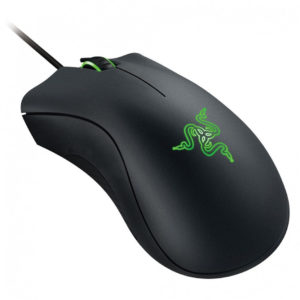
If you play a lot and at a fairly high level, it is worth trying something more progressive and clever.
FOR PROFESSIONAL GAMERS AND CYBERSPORTSMEN
What is important: flexible settings, maximum possible characteristics, programmable keys.
If you do not just consider yourself a professional gamer, but are one, then you need the most advanced models, equipped with what is called the latest technology, allowing you to customize almost everything your hand touches.
What is the difference?
Now let’s talk more about what you need to navigate when choosing a gaming mouse. Here are essentially the main characteristics of these manipulators:
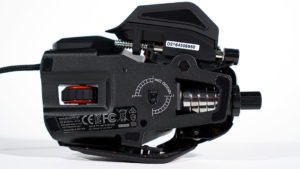
Connection type
Sensor type
Sensor resolution
Maximum acceleration
Response time
The presence of internal memory
Software functions
In addition, mice have different sizes and ergonomics: the most advanced models allow adjustment of these characteristics.
Connection: wired or wireless
Wired mouse provides constant and stable operation and minimal delay in the response of the cursor to mouse movement. In addition, its operation will not be affected by electromagnetic interference, and you will not have to change batteries right in the midst of any virtual battle. At the same time, there are quite expensive wireless mice on the market, as well as hybrid premium models that are not inferior to cable models in quality, stability and connection speed.
Sensor type: laser or optical
Modern laser sensors, which are the “heart” of any mouse, can work on virtually any surface, even uneven, and behave faster and more accurately in most situations. They also have lower power consumption. However, there are advantages to optical sensors. For example, some connoisseurs of first-person shooters especially respect the fact that mice with optics do not use prediction or movement correction algorithms, which makes them more honest. In addition, optics are less sensitive to a dirty and dusty surface – and here the cursor on models with a laser sensor will start jumping on such surfaces. But a good optical mouse needs a high-quality mat.
Sensor resolution
One of the main characteristics of the sensor is its resolution (DPI / CPI or the number of dots / inch). The higher it is, the better the mouse feels when you play on high-resolution screens. Some models today have reached 8,000 dpi, but in practice, for most computer games, a resolution of 3,000 dpi is quite enough. Moreover, in fast shooters, it is more accurate to aim when the resolution of the sensor does not exceed 1800 dpi. But in strategies, especially in MOBA, this indicator should be higher – so here you have to decide for yourself what games to take the mouse for. Therefore, such devices, where it is possible to adjust the resolution of the sensor, are especially appreciated.
Maximum acceleration
In the specification of the gaming mouse, be sure to pay attention to the maximum acceleration (G) – this is the acceleration of the “rodent”, at which the cursor breaks down and suddenly flies somewhere in the sky, making several turns around its axis. The greater this speed, the higher the threshold for disrupting the cursor. And by the way – optical mouse, as a rule, more confidently transmit the coordinates of the cursor during sharp moves. Although in high-quality laser analogs, the maximum acceleration is also at altitude.
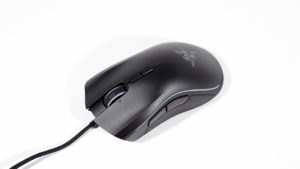
Response time and polling frequency
These are also very important features that you need to pay attention to when choosing a gaming mouse. The frequency of polling the USB port affects the smoothness of the cursor / sight: respectively, the higher it is, the smoother the movement of the cursor. But the response time of the mouse, on the contrary, should be as short as possible – in professional gaming models it is within 1 millisecond and indicates that during this time the signal from the mouse will reach the computer or laptop.
Software functions
Adjust the value of dpi and not only allows the presence of programmable functions in the gaming mouse. It will also help to customize the assignment of the mouse buttons, assign sequences and combinations of commands to them, determine the time intervals between commands, etc. In addition, if there is a controlled backlight, you can programmatically change colors and the glow mode, which will vary depending on the game and some action in it.
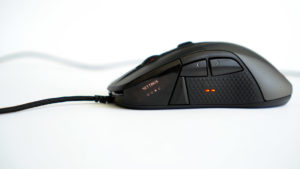
Internal memory
If the game mouse has internal memory, it will allow you to save several different profiles and individual key layouts that you pre-configure for different genres and tasks. Then, having come to the eSports championship with such a mouse or just to visit a friend, you can connect the device and immediately start playing, and not reconfigure everything anew for yourself and install the drivers.
Extra keys
The presence of additional keys is especially suitable for fans of strategies and online RPGs – they allow you to quickly tap on the “hot keys” without touching the keyboard. In such game models (the most famous example is Razer Naga) there are 10-12 programmable keys each. Many of them jokingly called calculators. But for those who prefer shooters, the presence of additional keys can only prevent.
Ergonomics
A good gaming mouse should rest comfortably in your hand. And it is unlikely that too small, tiny mouse will suit gamers. The question is, what kind of working hand do you have – right or left? Most models, of course, are sharpened under right-handed people: they have an anatomical shape and are close to the natural curve of the palm, having different lateral cavities for fingers, smooth transitional lines of the body, etc. Under the left-handed one can also find such options. In any case, it is precisely those made under the left or right hand of the mouse that are more convenient and ergonomic than the symmetrical models, which are the majority on the market today. Although high-quality expensive universal “rodents” is also very, very easy to use.
Body material
Pay attention to the material from which the mouse is made. Normal plastic surface is not protected from slipping fingers. Therefore, it is best to use matte, rough or plastic pimply plastic or steel in the case. Rubberized coatings are also very popular – they are much more pleasant to the touch, and such models are more firmly held in the hand, completely excluding the sliding of fingers on the buttons, even when wet. It is also important that the mouse had Teflon legs that improve slip. In low-cost models, they are small and quickly erased – and it is desirable that the teflon legs were thick and large.
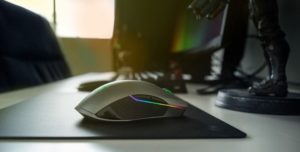
Weight
On the one hand, a heavier mouse allows you to more accurately aim the sight, on the other – in this case, the speed of movement decreases. Although if you prefer not shooters and action games, but, for example, strategies, neither one nor the other will not hurt you. In any case, a gaming mouse with a special weighting agent and weights will be ideal, with which you can adjust the weight within 20-40 grams.
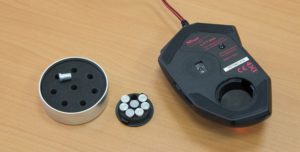
So, a good gaming mouse should meet the following optimal requirements:
Connection: wired or hybrid
Sensor type: laser or optical
Sensor resolution: from 3000 dpi
Maximum acceleration: from 30 G
Case material: matt, rough or bumpy plastic / steel or rubberized, protected from slipping of fingers
The presence of programmable mouse buttons, internal memory, the ability to change the resolution of the sensor and the weight of the device.